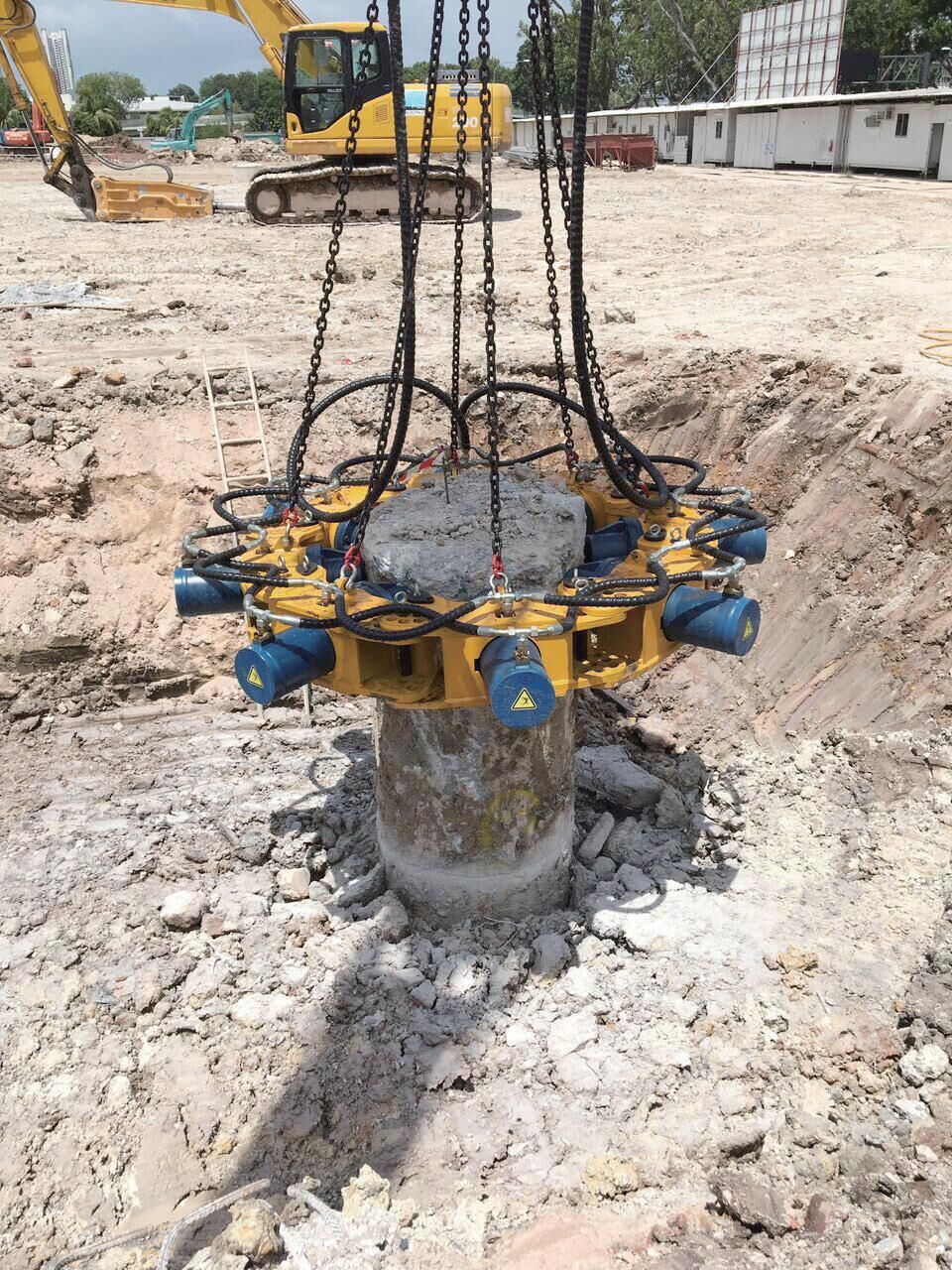The reasons for causing the steel cage to float up are generally:
(1) The initial and final setting times of concrete are too short, and the concrete clumps in the holes are too early. When the concrete poured from the conduit rises to the bottom of the steel cage, the continued pouring of concrete clumps lifts the steel cage.
(2) When cleaning the hole, there are too many suspended sand particles in the mud inside the hole. During the concrete pouring process, these sand particles settle back on the surface of the concrete, forming a relatively dense sand layer, which gradually rises with the concrete surface inside the hole. When the sand layer continues to rise with the bottom of the steel cage, it supports the steel cage.
(3) When pouring concrete to the bottom of the steel cage, the concrete density is a bit high and the pouring speed is too fast, causing the steel cage to float up.
(4) The hole opening of the steel cage is not securely fixed.The main technical measures for preventing and handling the floating of steel cages include.
The main technical measures for preventing and handling the floating of steel cages include:
(1) Before drilling, it is necessary to first inspect the inner wall of the bottom casing sleeve. If a large amount of adhesive material accumulates, it must be cleaned immediately. If it is confirmed that there is deformation, repair should be carried out immediately. When the hole is completed, use a large hammer type grab bucket to repeatedly lift and lower it several times to remove the residual sand and soil on the inner wall of the pipe and ensure that the bottom of the hole is level.
(2) The distance between the hoop reinforcement and the inner wall of the casing should be at least twice the maximum size of the coarse aggregate.
(3) Attention should be paid to the quality of the processing and assembly of the steel cage to prevent deformation caused by collisions during transportation. When lowering the cage, the axial accuracy of the steel cage should be ensured, and the steel cage should not be allowed to fall freely into the wellbore. The top of the steel cage should not be knocked, and care should be taken not to collide with the steel cage when inserting the casing.
(4) After the poured concrete flows out of the conduit at a high speed, it will rise upwards at a certain speed. When it even drives the steel cage to rise, the pouring of concrete should be immediately suspended, and the depth of the conduit and the elevation of the already poured concrete surface should be accurately calculated using measuring equipment. After lifting the conduit to a certain height, pouring can be carried out again, and the upward floating phenomenon will disappear.
Post time: Nov-01-2024



